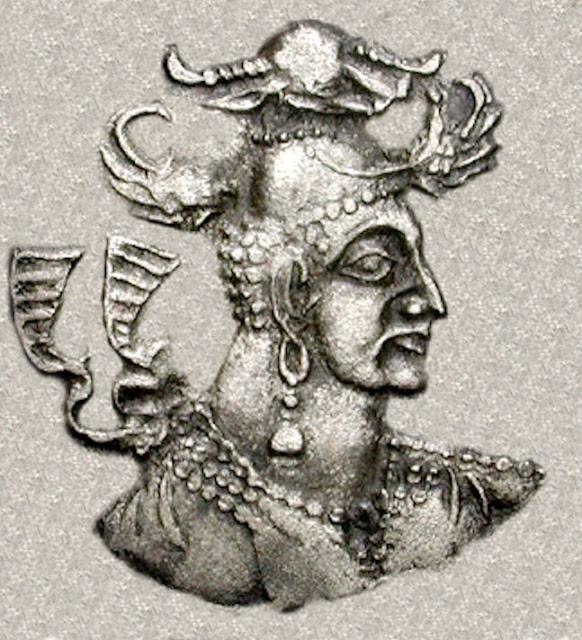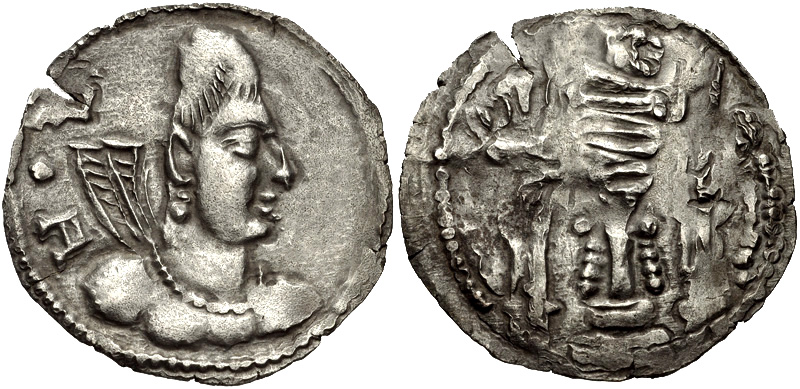Hephthalite/Nezak/Sogdian ruler, probably "Nezak Tarkhan", 688-700 CE
The (probable) Scythian-descended House of Karen breaks with Persia and join the Huns:
"The Battle of Badghis was fought in 654 between the Karen family and their Hephthalite allies against the Rashidun Caliphate.
In 651, the Arabs had invaded Khorasan, and by 652, they had conquered most of the region. However, in 654, the Karenids under Karin, along with the Hephthalites under Nezak Tarkan, made an insurrection against the Arabs. The rebellion spread in Herat, Badghis and Quhistan, and later they even managed to repel the Arabs from Nishapur and Balkh. During the same period the people of Zaranj rebelled, however, the Arabs under Abd Allah ibn Amir managed to defeat them and kill Karin."
-taken from Wikipedia
...
"HUNNIC TRIBES, Hephthalites. Circa AD 700. AR Drachm (33mm, 3.37 g, 4h). Imitating an issue of the Umayyad governor ‘Abd Allah ibn Khazim from the Marw mint. Dated AH 69 (AD 688/9).
In AH 61, Salm bin Ziyad was appointed Governor of Khurasan by the Umayyad caliph Yazid I. Three years later, bin Ziyad was deposed and replaced by ‘Abd Allah bin Khazim. The new governor quickly threw in his lot with the rebel faction led by bin Zubayr, dragging Khurasan into internecine conflict. Meanwhile, the Hephthalites took advantage of Arab distraction and invaded the region. In such a fractured state, Khurasan could not resist the Huns, and the whole of the province fell under Hephthalite control for a brief period.
This coin was struck after the deposition of bin Ziyad, using the imitation of his reverse type, as opposed to the other issues bearing a Hunnic style reverse. These types are clear evidence that this and related imitations (cf. CNG 60, 1090-6) were all produced in the same Khorasanian locality, by the same Sogdian speaking peoples. The group minting these imitations was plainly impartial to whether the prototype was Sasanian (with Khusro II types), or Arab-Sasanian, imitating either ‘Abd Allah bin Khazim or Salm bin Ziyad. However, the omnipresence of the tamgha and Sogdian legends (in countermark or engraveur) indicates that an association with Sogdian Hephthalite groups is the most important factor in the coins' production and identity."
-taken from CNG Coins
Source:
Quote:
.jpg)
.jpg)




Comments
Post a Comment